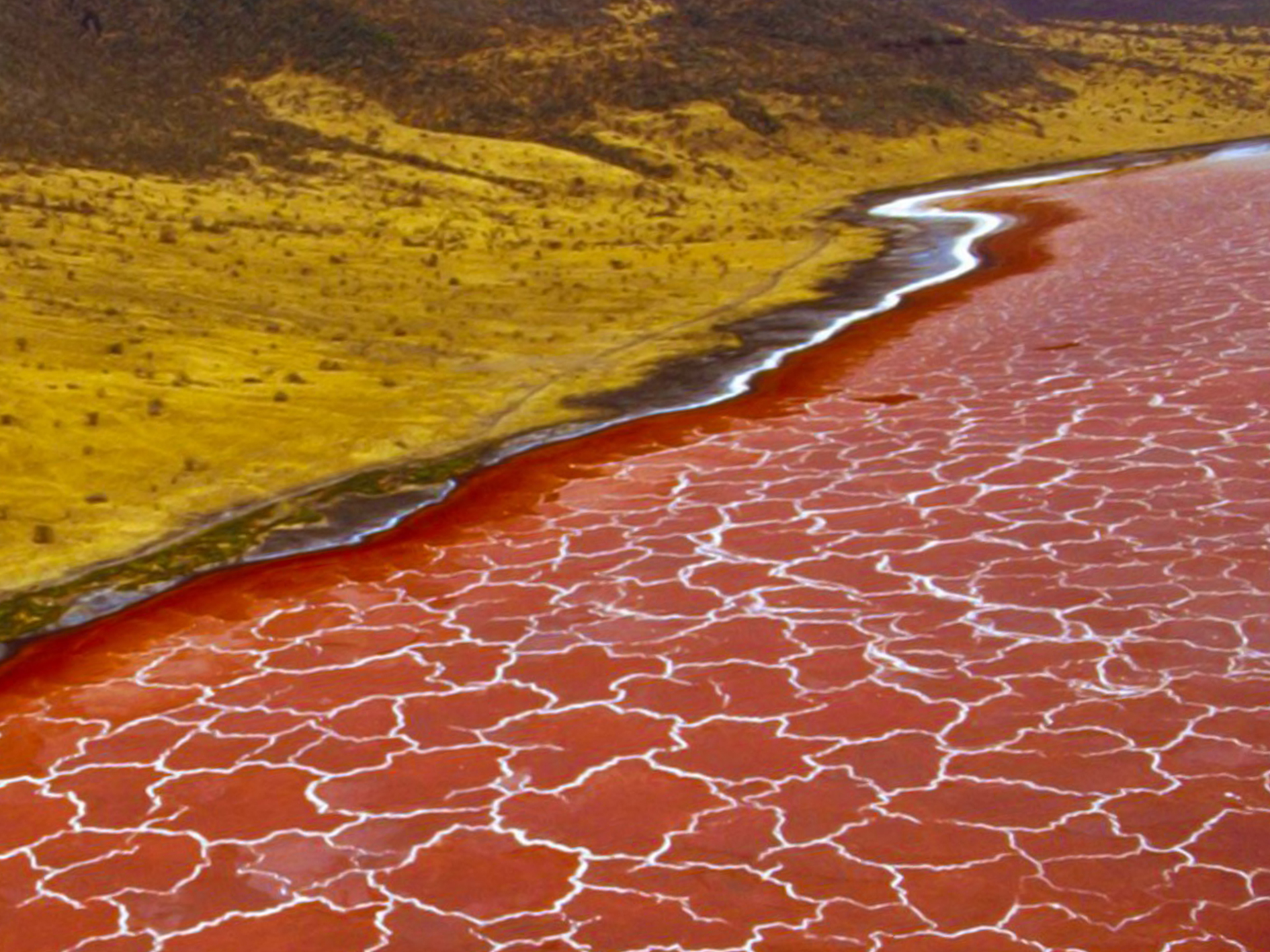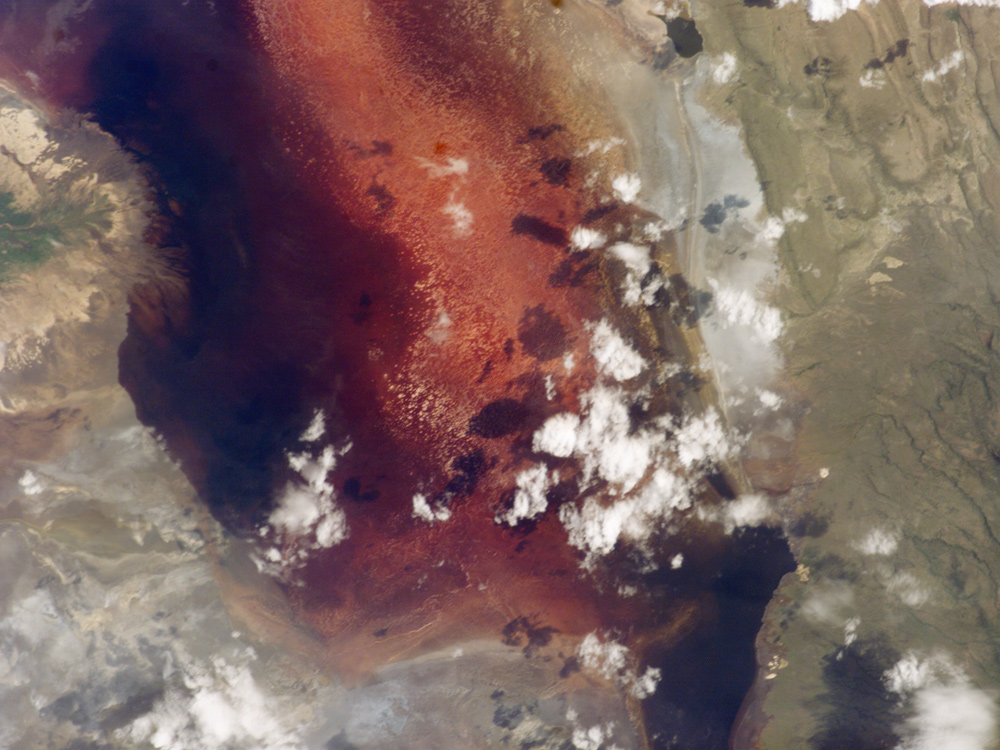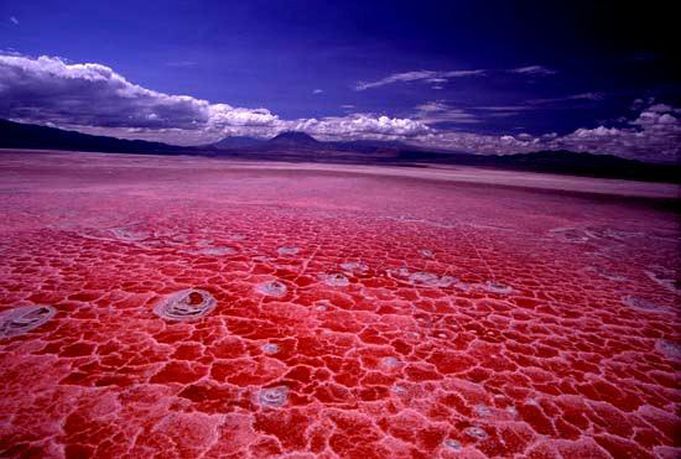

In between both lakes, you can also find the “ Serengeti National Park.” This vast nature reserve is the world-famous wildebeest migration, one of the so-called “ Eight Natural Wonders of the World.” Large herds of these animals flock together and go on a serious hike once a year. It is somewhat overshadowed, though, by the majestic Mount Kilimanjaro, which is located just to the east of the lake, and the immense Lake Victoria, situated at a similar distance to the west. It’s a popular tourist attraction because of its fascinating pink hue. Lake Natron is a remarkable lake located in the northern part of Tanzania, right near the border with Kenya.

It’s located in the northern part of Tanzania In this article, we’ll take a closer look at some of the most interesting facts about Lake Natron, one of the most fascinating pink lakes in the world. There are other micro-organisms that live on the crust of the lake that also give the red and orange color.This lake in East Africa is not the only lake in the world that produces a mesmerizing pink hue, but it’s definitely one of the biggest ones. This pigment is the one responsible for making the center of the lake a deep red color, while the shallower parts are orange. The cyanobacteria contain a reddish pigment responsible for photosynthesis. Such kinds of organisms that thrive in these conditions include some type of cyanobacteria that make food and nutrients through photosynthesis as other plants normally do. As a result, during the dry season, salinity levels rise and salt-loving organisms begin to thrive. The lake’s color is characteristic of areas where there are high rates of evaporation. The area around is also the only regular breeding grounds for lesser flamingoes who in East Africa are classified as “near-threatened.” Which Animals Can Live in Lake Natron? Some fish can survive close to the edge of the lake where it is less saline. Some invertebrates and birds live around the lake. That is not to mean that there are no animals. Majority of the fauna (animals) cannot tolerate, much less survive, the high temperatures or salinity of the water. The significant levels of carbonate found in the lava and the relatively low levels of magnesium and calcium have allowed the formation of a caustic alkaline brine. All these materials have been there since Pleistocene times. As if this is not enough, the bedrock of the lake is made up of highly alkaline trachyte volcanic material that has high levels of sodium. These two substances are very basic and raise the pH levels of the lake to more than 12. Another residue left behind is sodium sesquicarbonate dehydrate, which is otherwise known as trona. Natron’s scientific name is sodium carbonate decahydrate. As a result, a material called Natron is left behind.

The high temperatures have caused high evaporation levels of the water from the lake. The poison of the lake is brought about by the high temperatures which, incidentally, are why the lake is called Natron. Why is Lake Natron Considered to be a "Poisonous Lake"? If the rains come, it’s typically between May and December averaging around 800 millimeters annually with the scorching sun frequently raising the temperatures above 104⁰ Fahrenheit. The region around the lake does not receive much rainfall with irregular seasonal rains a common occurrence. Natron itself has a maximum width of 22 kilometres and a length of 57 kilometres. The river has a depth of fewer than 10 feet with a varying width depending on the level of water. The river itself is not that big nor is it deep. Primarily, the lake is fed by the Ewaso Ng’iro River, which originates from the central region of Kenya and by springs that are rich in minerals. Natron is a soda and salty water lake very close to the Kenyan border in the Gregory Rift, which is the Eastern part of the East Africa Rift. Lake Natron is located in the Arusha region of Northern Tanzania.


 0 kommentar(er)
0 kommentar(er)
